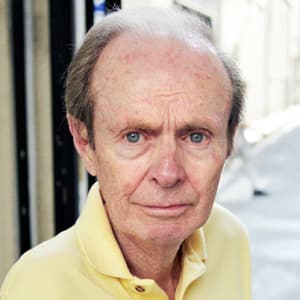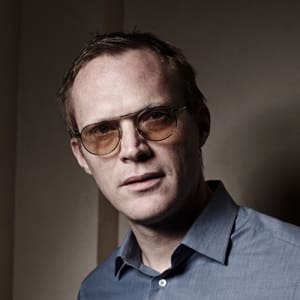
Hubert Selby Jr.
Hubert Selby Jr. was an American writer known for the controversial novel Last Exit to Brooklyn as well as Requiem for a Dream, both of which were adapted for film.
Synopsis
Born on July 23, 1928, in Brooklyn, New York, Hubert Selby Jr. joined the merchant marine as a teen before suffering severely from tuberculosis. He later wrote the acclaimed novel of stories Last Exit to Brooklyn, whose gruff language faced obscenity charges. Selby's other books include The Demon and Requiem for a Dream, which was adapted for film along with Last Exit. He died on April 26, 2004, in Los Angeles, California.
Early Life
Hubert Selby Jr., perhaps best known for his novel Last Exit to Brooklyn, was born on July 23, 1928, in Brooklyn, New York.
Selby went to sea as a merchant marine while he was still in his teens. Laid low by lung disease, he was, after a decade of hospitalizations, written off as a goner and sent home to die. Deciding instead to live, but having no way to make a living, he came to a realization that would change the course of literature: "I knew the alphabet. Maybe I could be a writer." Drawing from the soul of his Brooklyn neighborhood, he began writing The Queen Is Dead, which evolved six years later, into his first novel, Last Exit to Brooklyn (1964), a book that Allen Ginsberg predicted would "explode like a rusty hellish bombshell over America and still be eagerly read in a hundred years."
Last Exit to Brooklyn
Damned and praised with equal fire, Last Exit to Brooklyn more than fulfilled the first part of Ginsberg's prophecy; and today, more than 30 years later, the work is well on its way to fulfilling the latter: standing as the first breath and testament of a wholly new poetic, as a classic not only of contemporary literature, but of the literature of the ages. Even The New York Times would be compelled to recognize "Selby's place in the front rank of American novelists," to see in his work "the power, the intimacy with suffering and morality, the honesty and moral urgency of Dostoevsky's," and to say that, "To understand Selby's work is to understand the anguish of America."
More Novels
Hubert Selby's second novel, The Room (1971), considered by some to be his masterpiece, received, as Selby said, "the greatest reviews I've ever read in my life," then rapidly vanished leaving barely a trace of its existence. Over the years, however, especially in Europe, The Room has come to be recognized as what Selby himself perceives it to be: the most disturbing book ever written, a book that he himself was unable to read again for twenty years after writing it.
"A man obsessed / is a man possessed / by a demon" reads the defining epigraph of The Demon (1976)—a novel that, like The Room, has been better understood and more widely embraced abroad than at home.
If The Room is Selby's own favorite among his books, Requiem for a Dream (1978) contains his favorite opening line: "Harry locked his mother in the closet." It is perhaps the truest and most horrific tale of heroin addiction ever written. Requiem for a Dream was brought to the screen in 2000 by Darren Aronofsky, director of the 1998 film Pi.
Song of the Silent Snow (1986) brought together 15 stories, the writing of which spanned more than 20 years.
Later Work
In 1989, Last Exit to Brooklyn was made into a film—in which Selby himself made a cameo appearance—by German director Uli Edel. The novel remains both his most famous and infamous book, and in 1997 Selby recorded the whole of it, forthcoming in 1998 as a multi-CD boxed set under the aegis of Henry Rollins. Rollins worked with Selby on the 1990 CD Our Fathers Who Aren't in Heaven and in 1995 released Selby's Live in Europe 1989.
Selby's work has appeared throughout the years in Yugen, Black Mountain Review, Evergreen Review, Provincetown Review, Kulchur, New Directions Annual, Swank, Open City and other publications.
The Willow Tree, a long-awaited new novel, his first since 1978, was published in the spring of 1998.
Selby died of chronic pulmonary disease on April 26, 2004, in Los Angeles, California. At the time of his death, he was working on an autobiographical novel and screenplay, in addition to teaching a graduate writing class at the University of Southern California.




